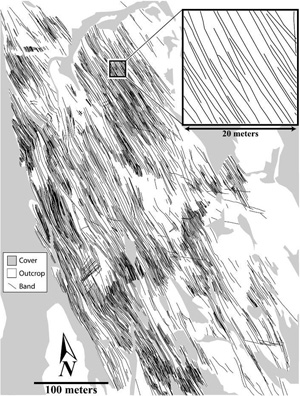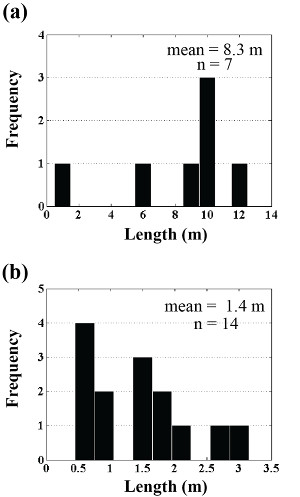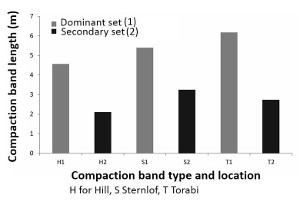| |||||||
|
|
|||||||
|
|
|||||||
| Compaction Band Length | |||||||
|
Data on the length distribution for compaction bands are rare. Sternlof (2006) mapped traces of high-angle to bedding compaction bands in Aztec Sandstone exposed within Valley of Fire State Park, Nevada, using low altitude aerial photographs. Sternlof reported a range of lengths from a few meters (the lower end of the mapping resolution) to about 100 meters (Figure 1).
More detailed length data using ground measurements for the compaction bands with various orientation with respect to the bedding and horizontal plane have been documented by Deng and Aydin (2012) and Torabi et al. (2015) which shows much shorter trace lengths due to gaps between various compaction band domains. Figures 2(a) and 2(b) from the former show length-frequency distribution for compaction bands at high-angle to bedding (a) and compaction bands parallel to bedding (b). Figure 3 from the latter shows data with similar results from various locations within the park. As described somewhere else, compaction band domains (see the links below) show highly variable sizes and variable sets so that significant spread in the individual band lengths may be expected. | |||||||
| Reference: |
|||||||
| Deng, S., Aydin, A., 2012 Sternlof, K.R., 2006 Torabi, A., Aydin, A., Cilona, A., Jarsto, B.E., Deng, S., 2015 |
|||||||
|
Readme | About Us | Acknowledgement | How to Cite | Terms of Use | Ⓒ Rock Fracture Knowledgebase |
|||||||


